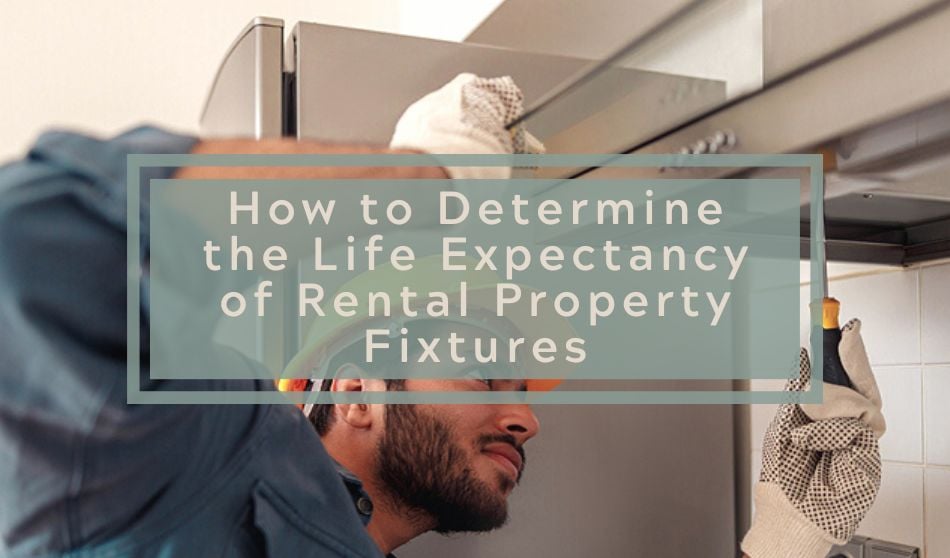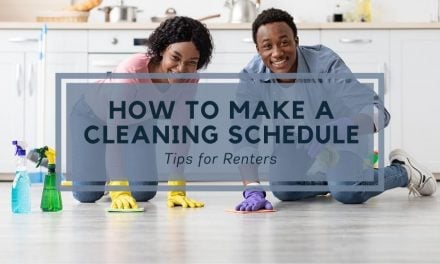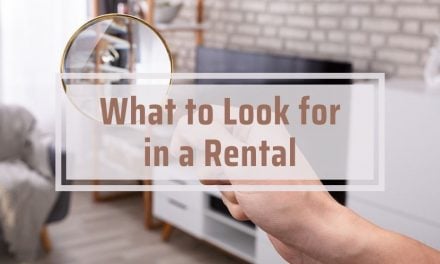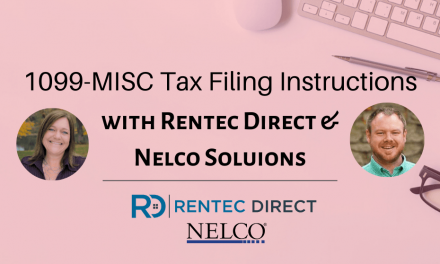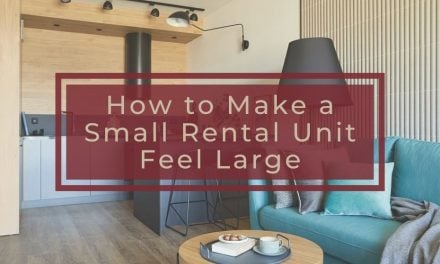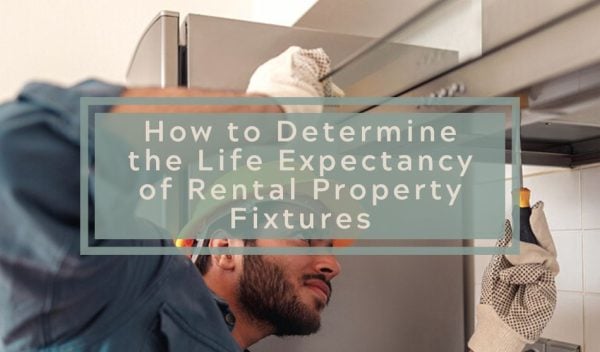
As a landlord or property manager, understanding the difference between wear and tear versus damage is crucial when evaluating your property at the end of tenancy. Unfortunately, new and seasoned landlords alike can get taken off guard when coming to terms with the realistic lifespan of certain fixtures and items within a home.
Knowing ahead of time how long you should expect fixtures within your rental property to last is key to planning an effective budget and maintaining an excellent rental for your tenants. While seasonal maintenance and inspections can help ensure that fixtures last longer and are not damaged due to negligence, even the best cared-for property will face the need to replace items within the unit over time.
What is the Life Expectancy of Items in a Rental Property?
According to the US Department of Housing and Uban Development (HUD) uses this chart to offer life expectancy for common household appliances and property. Budgeting in advance with these expectancy recommendations in mind can ensure that you’re ready to make any updates to keep your property looking and operating at its best for your tenants.
Sample Life Expectancy Chart According to HUD:
| Hot Water Heater | 10 Years | All Units |
| Plush Carpeting | 5 Years | Family |
| 7 Years | Elderly | |
| Air Conditioning Units | 10 Years | All Units |
| Ranges | 20 Years | All Units |
| Refrigerators | 10 Years | All Units |
| Interior Painting- Enamel | 5 Years | Family |
| 7 Years | Elderly | |
| Tiles/Linoleum | 5 Years | Family |
| 7 Years | Elderly | |
| Window Shades, Screens, & Blinds | 3 Years | Family, Elderly |
What Landlords Should Know About Rental Property Life Expectancy Projections:
Not all home items or fixtures are created equal. Some are designed with longevity in mind, while others are designed to appeal to bargain hunters. While HUD guidelines can serve as great benchmarks for general items, it’s always beneficial to check the manufacturer recommendations and keep documentation. This can help you determine what the normal lifespan for any property items should be. Keep in mind these recommendations are often for singe-family homeowners, a steady turnover of renters using the items may impact its life expectancy.
With this information in mind:
- Consider the quality of installations when choosing fixtures, carpeting, and appliances.
- Landlords might benefit from choosing a higher-end midline product instead of the top-of-line or bargain counterparts.
- This will ensure longevity and style (attracting tenants and helping your tenants have a better quality of life in your rental) while ensuring you are not paying too much for items that will need to be replaced relatively sooner than the manufacturer suggests.
Additional Property Items or Fixtures That Landlords Will Need to Repair or Replace:
Roofing on Your Rental Property:
The roof is one of the most important maintenance items on your list, and it can, unfortunately, be one of the most expensive. A roof leak or a roof damning issue can lead to astronomically expensive repairs. Landlords and investors must prioritize roof inspections and Replacements when it is time. A replacement can be a costly investment, so be sure that you are taking all of the proper maintenance steps in the interim. However, even the most well-maintained roof will need to be replaced. Your rental property’s life expectancy is largely dependent on your property’s roofing materials.
These recommendations from RoofAdvisor can act as a general rule to help you understand your roof’s expected lifetime with proper maintenance:
- Composition Shingles: 12-20 years
- Asphalt Shingles: 15-30 years
- Wood Shingles: 20-25 years
- Rubber Roofs: 30-50 years
- Metal Roofs: 50-75 years
Exterior Paint on Your Rental Property:
While your paint’s life expectancy will greatly depend on your brand, landlords and owners should expect to repaint approximately every 5-7 years. This will protect your property’s exterior from damage and will ensure that your property is attractive and inviting to potential tenants. Keep in mind that accent colors such as trims and doors may need a retouch sooner to ensure your property looks fresh.
Finally, remember that storms and sun exposure can all have a big impact on your exterior paint’s lifespan. When in doubt, always check with a local paint professional to find out exactly how long your paint should last, given your rental property’s local climate.
Can I Charge My Tenants if an Item Breaks Before Its Projected Life Expectancy?
Landlords and property managers will need to consult their rental’s local landlord-tenant laws to see what fees and charges are allowable. Each state has its own laws governing security deposits and other fees.
Learn more: Security Deposit Laws, Limits & Deadlines – State Guide for Rentals
Generally, landlords and property managers are allowed to charge tenants for items that were in good condition at the time of move-in that are in need of repair or replacement due to tenant negligence or property abuse. In these instances, landlords and property managers will need to be able to prove that damage above normal wear and tear exists.
If you are unsure or have questions, be sure to consult a lawyer familiar with landlord-tenant law in your area. This will prevent you from making unauthorized charges to your tenants’ security deposit, which can open you up for legal action.
How Much Money Should Landlords and Investors Expect to Pay for Maintenance?
Every unit will have general maintenance costs associated with the property. A seasoned investor will take these costs into account when evaluating a potential investment property. As a general rule, most homeowners should save about 1% to 2% of the property’s value annually to assist with general maintenance. For landlords, this can act as a good baseline.
Another way investors calculate a budget for rentals, is the 50% rule: allocate 50% of your rental rate for operating expenses. However, either percentage budgeting options may need to be increased if your property is older and has any fixtures that are near the end of their life expectancy.

